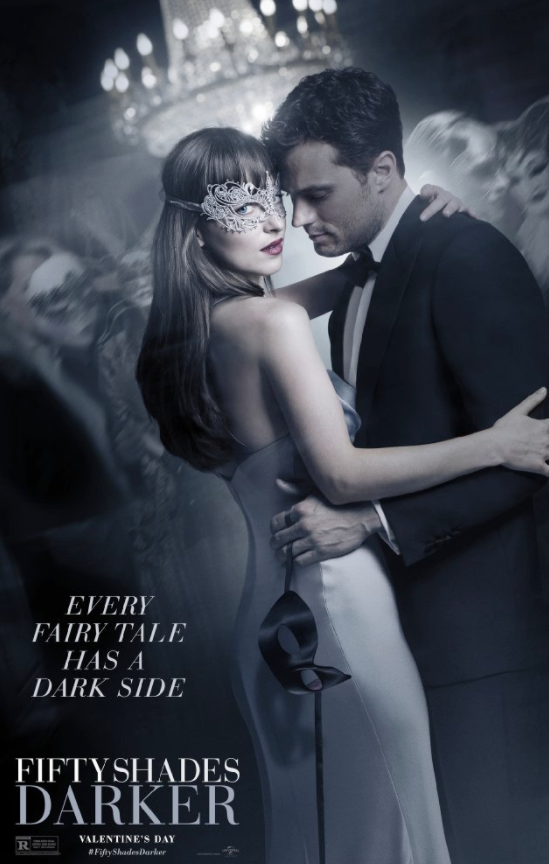
In celebration of Valentine’s Day, I wanted to see the sexiest movie in theaters: “The Lego Batman Movie.” Instead, I chose “Fifty Shades Darker,” the sequel to “Fifty Shades of Grey” (2015). Both are based on books in the hit “Fifty Shades” trilogy by E. L. James. Both the books and the movies have become phenomenons, for better or for worse, and have brought openly erotic literature into mainstream cultural consumption. You’re unlikely to find someone without something to say about the controversial series.
“Fifty Shades Darker” takes place some time after Anastasia Steele and Christian Grey’s breakup at the end of “Fifty Shades of Grey.” Ana seems to have moved on with her life, until Christian returns, promising a more “normal” relationship than before. Against her better instincts, Ana accepts, and the two begin a new relationship, all while combating threats to their relationship, like a scorned ex-girlfriend and a new boss.
“Fifty Shades Darker” has a great score and soundtrack. Both films in the series were scored by legendary composer Danny Elfman, and “Fifty Shades Darker” has a number of original pop songs, including “I Don’t Wanna Live Forever” by ZAYN and Taylor Swift and “Not Afraid Anymore” by Halsey. The songs are good, and give the movie some music-video appeal. The movie is well-filmed, with impressive cinematography of Seattle landscapes and high-rise apartments.
But of course, there are the more controversial and, in some cases, just plain bad, parts of the movie. First and foremost: the sex. It’s still a pretty big portion of the film, but it doesn’t serve a plot purpose like it did in the first movie. In “Fifty Shades of Grey,” the BDSM (bondage/discipline, domination/submission, sadism/masochism) sex, and Ana’s feelings about it, drove the conflict of the movie. In “Fifty Shades Darker,” the sex scenes feel more unnatural, and it seems they’re only here because a “Fifty Shades” movie needs sex scenes. Granted, there are more sex scenes in this movie than most (and in all honesty, better-shot sex scenes than most other movies), but the sex in “Fifty Shades Darker” isn’t as naughty or obscene as it was in “Fifty Shades of Grey.”
“Fifty Shades Darker” aims to be a relatively more traditional love story, and in turn becomes much duller that the first film. The movie features several romance movie clichés multiple times over, including two scorned lovers, two jealous romantic rivals and even a potential death scare to boot. The screenplay was written by E. L. James’ husband, Niall Leonard, so if nothing else, nepotism can be blamed for the poor narrative. And the narrative is terrible, but really it’s more boring and mundane than just awful. “Fifty Shades Darker” could be any other Lifetime movie with some pornographic scenes edited in.
Even with the dreadfully dull story, there’s something strangely endearing about the growing relationship between Ana and Christian. In the first movie, Dakota Johnson, who plays Ana, and Jamie Dornan, who plays Christian, could create absolutely no chemistry between each other, and the story gave them little reason to be together, other than really great sex. In “Fifty Shades Darker,” however, their connection was admittedly more believable, and I found myself actually rooting for the two, despite how misguided their relationship is in the first place.
Overall, I don’t see much point in recommending the movie one way or the other, because at this point “Fifty Shades” is such a phenomenon that you should know whether or not it’s for you. It’s poorly written, but has a great soundtrack and is occasionally sexy. When you go see the movie, you already know what you’re getting because the film differs minimally from the first. If you liked “Fifty Shades of Grey,” you’ll probably like “Fifty Shades Darker.” If not, skip the sequel.


